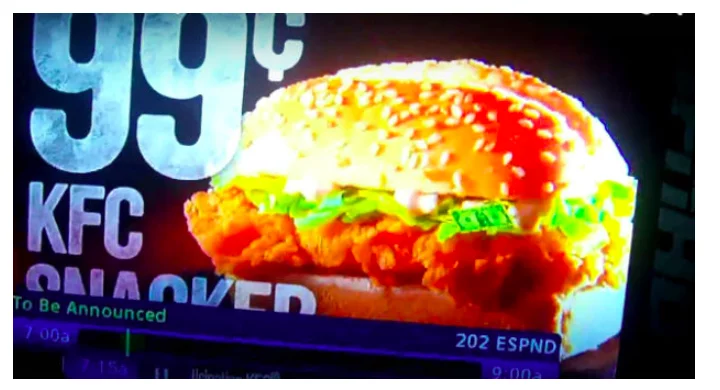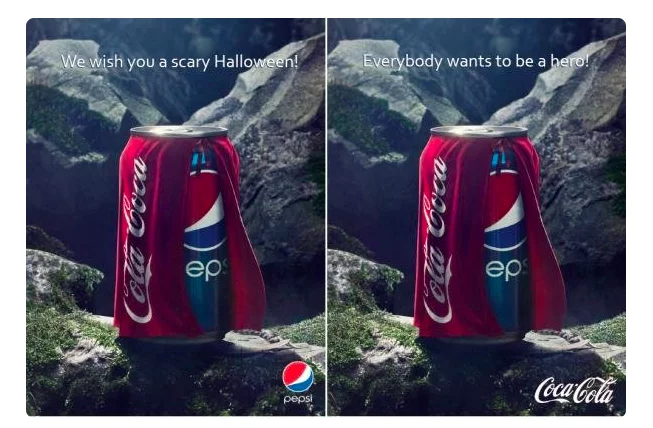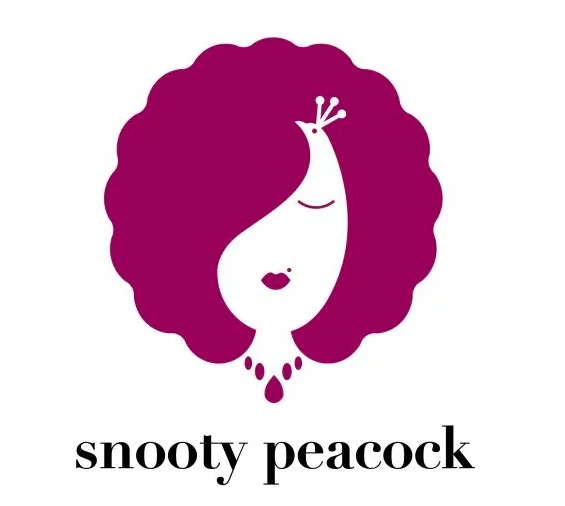
Have you experimented with subliminal advertising?
If you have, you’ll know it’s a hard thing to get right.
In this article, i’ll explain what subliminal advertising is and how it can be used effectively.
What We’ll Cover:
What is Subliminal Advertising?
Before we dive into the actual advertising, let’s take a little psychology side trip.
A subliminal message, also called a hidden message, is one that’s designed to pass below the normal limits of perception.
They’re inaudible to the conscious mind but audible to the unconscious, or deeper, mind.
One of the most popular examples of subliminal messages are messages played during sleep.
For example, has anyone seen the Friends episode where Chandler tries to stop smoking by listening to hypnosis tapes at night, but ends up thinking he’s a “strong, confident woman?”

Subliminal messaging in action
That’s subliminal messaging.
Subliminal messaging is the practice of using words or images (stimuli) that consumers don’t consciously detect.
It often involves words being flashed on a screen so briefly, we don’t detect them. We’re talking .003 seconds brief.
Subliminal messaging in advertising was first introduced as a concept by James Vickery and later reiterated by Vance Packard in his 1952 book The Hidden Persuaders.
In it, he claimed that moviegoers had been subjected to subliminal commands to increase the sales of Coca-Cola and popcorn at the movie concession stands.
Turns out, the whole thing was totally false.
But, despite it being made up, people weren’t too happy with the concept of this subliminal marketing.
After all, no one likes feeling manipulated.
This is what lead the Federal Communications Commission (FCC) to declare subliminal advertising “contrary to the public interest.”
To be clear, there’s really no supporting evidence that says subliminal advertising actually works.
But there is plenty of stigma around the subject, so it’s best to tread carefully.
Let’s take a further look at the do’s and don’ts of subliminal advertising.
Subliminal Advertising Done Wrong
Here’s what you don’t want subliminal ads to be: obvious.
I’ll reiterate: people don’t like feeling manipulated, which is an inherent risk when it comes to hidden advertising. When a message loses its subtlety, it becomes too obvious.
Yet still, ever since Vicary presented his study, there’s been a fascination with the art of subliminal meaning and messaging, and some advertisers still try to recreate what the study promised.
But the thing is, being caught purposely trying to insert “hidden” messages can lead to controversy. Here are a few of the most infamous examples of not-so-subtle subliminal advertising.
1. The Food Network and McDonald’s
The Food Network made major headlines in 2007 when it was caught inserting a flash of the McDonald’s logo during the popular show Iron Chef.
Why it Doesn’t Work: Here’s a perfect example of being entirely too obvious.
There was no attempt to hide this one, and the fact that the flash was completely unrelated to what was being aired didn’t help matters.
Was it really a play at subliminal messaging? Sure seems like it, but McDonald’s and The Food Network both claimed the message was an error.
2. KFC’s Dollar Snacker

Subliminal Advertising: KFC Dollar Snacker
You had to slow this commercial way down to see it, but once you do it, it can’t be unseen.
KFC also drew negative attention in 2008 when it aired a commercial for its Dollar Snacker featuring a green dollar bill in the lettuce.
Why it Doesn’t Work: First of all, it’s sloppy.
Secondly, it’s a dollar bill. No one needs to be reminded that KFC’s end goal is to make us spend money.
3. Husker Du

Subliminal advertising: Husker Du
You probably don’t remember the board game Husker Du. That could have something to do with their subliminal advertising scandal.
In 1973, the company aired ads that featured a series of frames reading “Get It.” The manufacturer admitted to inserting the messaging, and the ad is ultimately what lead to the FCC’s condemnation of such tactics.
Why it doesn’t work: Again, it’s sneaky. It’s manipulative.
And just like the McDonald’s ad, it was far too obvious.
4. Burger King

Subliminal advertising: Burger King
In 2009, Burger King launched an advertisement campaign to promote its new seven-inch burger, which included a single beef patty, American cheese, sauteed onions, and A-1 steak sauce. It features a surprised-looking woman with her mouth agape, facing the product. The caption reads “It’ll blow your mind away.”
Why it doesn’t work: First off, the implications are anything but subtle. For an ad that’s trying to sell a sandwich, it’s laden with sexual metaphor. There was no need to include this kind of imagery, particularly for a product that has absolutely nothing to do with sex.
5. Wendy’s

Subliminal advertising: Wendy’s
Wendy’s updated its logo in 2013 for the first time since 1983. While it still retained many of the same elements as the original, the new logo attempted to create a positive mental image in the mind of the consumer by including the word “MOM” on Wendy’s ruffled collar.
Why it doesn’t work: Few think of mom’s delicious home cooking when visiting a nationwide fast-food chain like Wendy’s.
6. 2000 US Presidential Race
Ahhh… the 2000 Gore v. Bush presidential race. The year the entire country learned the phrase “hanging chads.” Turns out there were a few other memorable moments of the election and one of them involved subliminal advertising.
During one of George W. Bush’s campaign commercials, his team used subliminal messaging to display the word “RATS” more prominently than the rest of the words, when flashing the word “Bureucrats” across the screen, leading some people to believe that he was calling Al Gore and his campaign a derogatory term.
Why it doesn’t work: It could have gotten the Bush team into some hot water! Even though Bush denied the allegations, the ad caused a lot of speculation and took attention away from the real issues of the campaign. It was eventually investigated by the FCC and pulled off the air.
Subliminal Advertising Done Right
Here’s how people should feel about subliminal ads: clever.
They’re ads that make viewers feel like they’ve discovered the hidden message. They should feel a little proud of themselves, and even get a little kick out of the cleverness of the ad.
It should never feel like an attempt to brainwash or hypnotize. People don’t want to be fooled, but they do want to be in on the joke.
This means you have to walk a fine line when attempting to pull off this advertising technique.
Here’s what you don’t do: flash brief images or words, as seen above. For one, it doesn’t really work. And beyond that, people have proven they don’t really like it.
What you do do is this: play with images and optical illusions. Blur the line a little.
The great thing about these hidden messages is that, when done well, they can pay off big time and lead to some of the most memorable ads to date.
Here are a few examples of subliminal advertising done right.
1. Pepsi Vs. Coke

Subliminal Advertising: Pepsi vs. Coke
It’s subtle but effective.
Pepsi was the first to unveil the ad, playing up the “horror” of receiving a Coke when you really want a Pepsi.
Coke’s response was perhaps even better, capitalizing on the caped Coke as the real hero of the story.
Why it Works: It works so well because the two classic competitors each manage to make consumers see their product in a positive light – while casting a clear shadow on the competition.
It’s designed to make you feel something without explaining why, and it manages to do just that.
2. Tostitos

Subliminal Advertising: Tostitos
I’ll be honest, it took me years to notice this one.
The Tostitos logo is something almost all of us are familiar with, but unless you’ve taken the time to really inspect it, you probably missed the hidden scene in the middle.
The two T’s also form two friends sharing chips and salsa. Pretty cool, eh?
Why it Works: It works because it isn’t in your face, and it promotes the benefit of the brand. The message is so subtle, you likely never even consciously noticed the message before: Enjoy a tasty snack with people you like.
It isn’t pushing sales necessarily; instead, it’s pushing an experience.
3. Amazon

Subliminal advertising: Amazon
Amazon has arguably one of the most recognized logos around.
But no matter how many times you’ve seen it, you may not have really taken it in.
Take a look at the strategically placed arrow to see what I mean.
Why it works: The hidden message here is simple: Amazon sells everything, from A to Z.
It helps, of course, that Amazon actually does sell everything. It’s not pushy or salesy, it just reinforces the channels, all-in-one model.
The fact the arrow also forms a smile doesn’t hurt, either.
4. Snooty Peacock

Subliminal Advertising: The Snooty Peacock
Sometimes, a subliminal message can be in your face and still work.
Case in point: the Snooty Peacock.
Why it works: The optical illusion used here delivers two images: one a peacock, the other a woman with a necklace.
Depending on how you look at it, you could see one or the other. Both, however, are intended to hint at the elegance of the brand.
Peacocks are one of the prettier birds, often seen as decorative, while the woman represents the unique clientele. If you couldn’t tell, the Snooty Peacock is a jewelry manufacturer.
Once again, it’s not necessarily a sales tactic. But it will cause a viewer to look twice at the ad – which is exactly what the Snoot Peacock wants.
5. FedEx

Subliminal Advertising: FedEx
Here’s another one you probably didn’t see coming.
Even your friendly, neighborhood FedEx is harboring a hidden message. The whitespace between the E and X clearly outlines an arrow.
Why it works: FedEx uses the arrow to highlight speed and efficiency – the brand’s biggest benefits.
Like many others on the list, you wouldn’t know it until someone pointed it out. But once you do, you feel all the more clever about it.
6. SFX Magazine

Subliminal advertising: SFX magazine
SFX Magazine is a sci-fi magazine that focuses on all things fantasy and sci-fi entertainment-related.
But you wouldn’t necessarily know it from the cover.
Many have noticed that the logo is often obscured to look like it’s spelling out something a little different – especially when women are featured on the cover.
Coincidence or intentional subliminal advertising?
Why it works: Well, it made you look, didn’t it?
7. Pirates of the Caribbean

Subliminal advertising: Pirates of the Caribbean
Disney’s long been accused of hiding subliminal messages in their movies.
But this one may be the most subtle (and clean) of them all.
While not exactly obvious, a longer look has many convinced that Disney adapted the well-known skull and crossbones emblem to look more like their iconic Mickey Mouse logo.
Why it Works: People love Mickey Mouse. They feel good about Disney.
So present them with something that’s reminiscent of both, and they’re bound to transfer some of those good feelings – whether conscious of it or not.
Whether it was Disney’s intention or not to draw such a close similarity, there’s no denying the resemblance.
8. Baskin Robbins
You’ve probably heard of Baskin Robbins. You might even know the company sells 31 flavors of ice cream.
But did you also know that Baskin Robbins uses subliminal advertising? In fact, the company used a subliminal message to promote the number of flavors it sells.
Check out the logo below. Look carefully at the non-blue part.

Baskin Robbins uses subliminal advertising
It’s subtle, but it gets the point across. There’s a distinct “31” within the “B” and the “R”.
The company uses that subliminal message to reinforce its well-known unique selling proposition: a whole lot of flavors to choose from.
9. Toyota
Have you ever looked closely at the Toyota logo? If so, you might have noticed a bit of subliminal advertising in it.
The logo looks like a fairly routine car company graphic. However, if you pay careful attention, you can see that the logo has meaning.
How so? Because the various parts of the graphic can spell out the word “Toyota.”
Take a look at the graphic to the left of the company name in the image below. See if you can make out letters within it.
You can create letters by hiding specific parts of the logo. Then, you can use the letter you create to spell out the brand name. Use a name generator to help you.
You can see how to do that with the image that follows.

Subliminal advertising in the Toyota logo explained
See that? Different parts of the logo can create different letters.
Toyota uses that logo to reinforce its brand. It’s a very clever strategy.
10. Toblerone

Subliminal advertising: Toblerone
At first glance, the Toblerone logo looks like your average Swiss mountain range. But take a closer look and you’ll notice that the logo features a bear standing on its hind legs expertly hidden in the design.
Why it works: This is a clever tribute to the Swiss city of Bern, nicknamed “the city of bears,” where the chocolate company was founded.
11. NBC

Subliminal advertising: NBC
While most are familiar with the NBC logo, there are a few subtle details that are easy to overlook. The white space in the middle combined with rainbow colors around it creates the illusion of a peacock.
Why it works: This represents the company’s pride in the shows and programs they produce and broadcast.
12. Spartan Golf Club
When you look at this logo, what do you see?

Subliminal Advertising: Spartan Golf Club
At first glance, you may notice a Spartan helmet but look again. Do you see the golfer? This is an incredibly, well-designed logo that will remind you to go play golf at the Spartan Golf Club.
What it works: It’s subtle but powerful. If you see this logo, you’re going to remember to play golf at this club.
Images in Subliminal Advertising
Humans are visual creatures. We like to examine things with our eyes before making a judgment or decision. However, our visual perception can often be manipulated (remember those Magic Eye books from the 90s?).
Advertisers often use this to their advantage. They will use particular color palettes designed to invoke an emotional reaction in their audience or hide pictures within other graphics, including their logo.
It’s not all shady stuff though.
Backmasking
Another way to incorporate subliminal messages into advertising is through something known as backmasking. Backmasking is a digital audio trick where a message is recorded and then played backward on a track that is designed to be played forward.
There are a few examples of backmasking in popular Beatles songs like “Rain” and “Free as a Bird,” and also in Beck’s famous song “Loser.” However, it isn’t used as often in advertising as other subliminal messaging techniques.
Sub-visual Messaging
Another more popular subliminal advertising technique is sub-visual messaging. This is when a graphic (usually a company’s logo) will flash on the screen so quickly that you don’t notice it but your subconscious does.
The goal of this type of advertising is to deliver the message to the audience without openly delivering it … if you know what I mean.
Subliminal Advertising FAQ:
1. What is Subliminal Messaging?
Put simply, subliminal messages encompass visual or auditory stimuli that the conscious mind is unable to recognize. It is often inserted into media mediums such as television commercials, songs, or print or digital advertisements. With the ultimate goal of being impactful, but not overpowering, this kind of messaging can be used to reinforce or amplify the persuasiveness of advertisements, or to communicate a different idea entirely.
Real subliminal messages cannot be easily observed or uncovered by the conscious mind, despite your efforts to actively look for them. This is because the things we see and hear around us on a daily basis are above the threshold of conscious perception, whereas subliminal messages often fall below this threshold.
2. Do Subliminal Messages Work?
There’s no easy answer to this question as there’s still no clear consensus by the wider scientific community. In generations past, researchers would have argued that subliminal messages were ineffective. But, these days, emerging research has demonstrated that subliminal messages do have the power to influence us to some degree.
As consumers, we’re often the target of subliminal messages these days. And subliminal messaging tactics tend to work best when we don’t notice them.
With our subconscious perpetually on autopilot, when subliminal messages do stick, it’s because your subconscious mind is taking them in. They sneak into your conscious rational mind and reach the core of your belief system.
3. Is Subliminal Advertising Illegal?
You should consult an attorney to get an answer to that question.
However, there are some court precedents that you might want to bring up when talking about the issue with your attorney.
The first is Central Hudson Gas & Electric v. Public Service Commission of New York. In that case, the Supreme Court held that in order for marketing speech to be protected by the First Amendment, it must not be misleading.
If your subliminal message is misleading, you could run into problems.
In a separate case, Vance v. Judas Priest, a Nevada judge ruled that subliminal messages aren’t protected by the First Amendment.
4. What Do Psychologists Say About Subliminal Advertising?
Art Markman, writing for Psychology Today, says that subliminal advertising can have some influence on a consumer, but it can’t turn that person into a robot.
In other words, the best you’re going to do with subliminal advertising is to nudge people in a direction they have headed anyway.
But it does have some influence.
Philip Merikle, who works for the Department of Psychology at the University of Waterloo, points to several studies that show “considerable information capable of informing decisions and guiding actions is perceived even when observers do not experience any awareness of perceiving.”
5. What Do I Need to Know About Subliminal Advertising?
If you’re going to start incorporating subliminal messages into your advertising, it is important to understand that it only works when you’re subtle about it. Choose particular colors, words, and shapes to make your point in a small but powerful way.
6. What Are The Issues With Subliminal Advertising?
Like most advertising techniques, subliminal messages don’t exist without some issues. Some people think they are unethical and manipulative. Sometimes, your messages could even get you in trouble, like George Bush’s campaign ad almost did.
If you are going to infuse your advertisements with some subliminal messages, check out the 12 examples above for some tips on how to do it right.
Wrapping Up Subliminal Advertising
So there you have it: how to pull off subliminal advertising – and how not to.
Remember, it’s all about subtlety. Focus on art and design rather than words, and you could very well have a hit on your hands.
